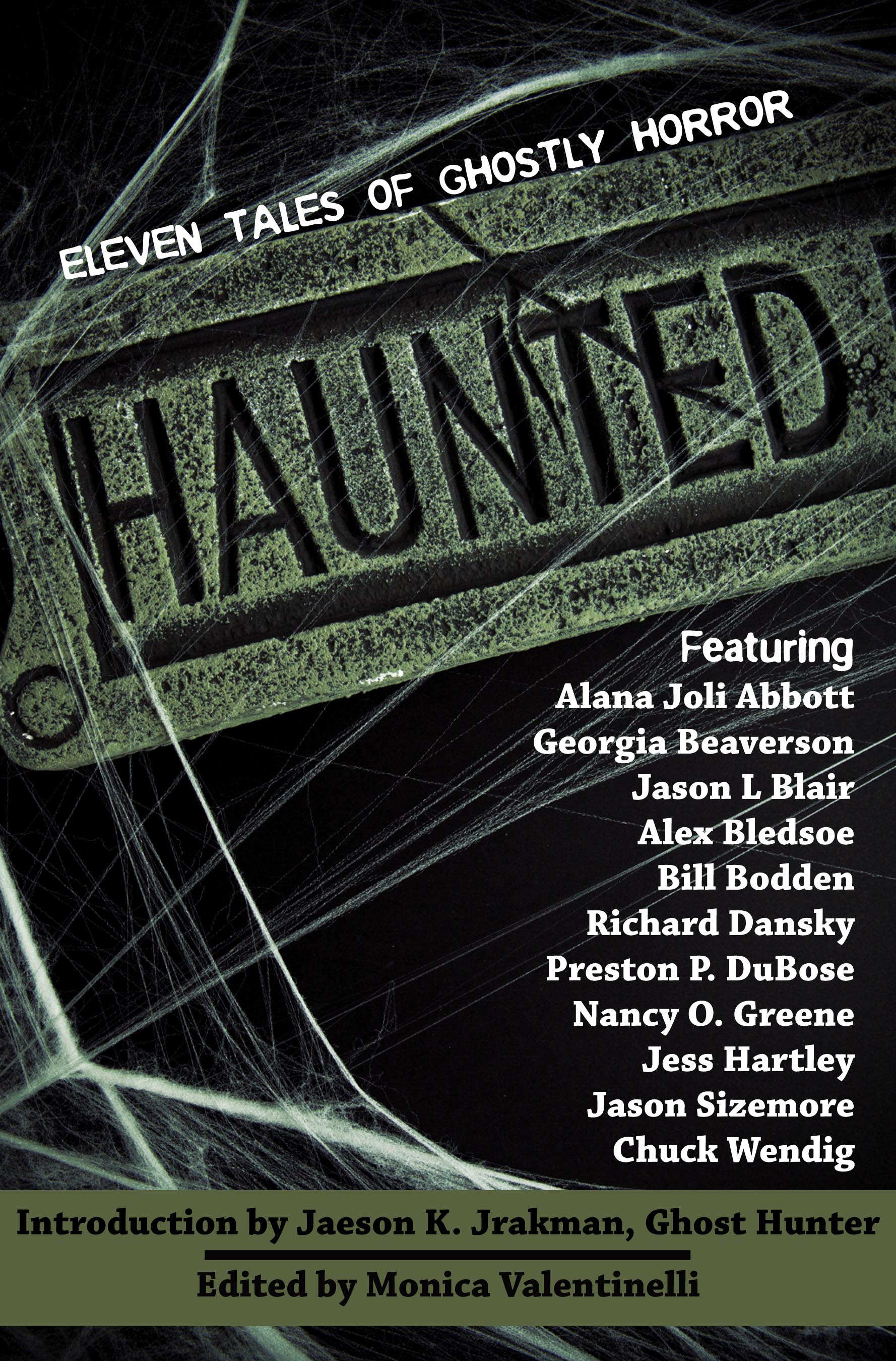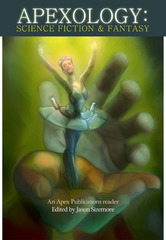 HAUNTED: 11 Tales of Ghostly Horror is now available in eBook format on DriveThruHorror.com for your Kindle, Nook and more! Just in time for All Hallow’s Eve; I hope you’ll do me the honor of downloading this collection of ghostly mysteries.
HAUNTED: 11 Tales of Ghostly Horror is now available in eBook format on DriveThruHorror.com for your Kindle, Nook and more! Just in time for All Hallow’s Eve; I hope you’ll do me the honor of downloading this collection of ghostly mysteries.
The first review has been posted and here’s what the reviewer had to say about my role:
The attention and careful thought that editor Monica Valentinelli put into arranging the stories in “Haunted” pays off as it the only anthology I have ever been able to read (and enjoy) in a single sitting. — Review of HAUNTED on DriveThruHorror.com
Download Haunted: 11 Tales of Ghostly Horror
Who willingly walks into a haunted house?
Ghost hunters explore dark places, investigate clues and uncover secrets of the dead. Evidence of an afterlife may prove elusive and few hunters recognize some things are best left buried and forgotten.
Suspense and intrigue lurks inside HAUNTED: 11 Tales of Ghostly Horror. Unlock the clues in these eleven mysteries:
+ A curious ghost hunter tracks down a mysterious device’s origin and finds more than he bargained for.
+ One local tour guide meets a group of cocky professionals in a small town and discovers something more frightening than ghosts.
+ After his famous ghost hunting wife is declared missing, a devastated husband follows a trail of clues to find her.
+ A team of researchers at a local university are in over their heads when they try to prove a house is haunted.
+ When a desperate mother offers his services, a boy who can talk to ghosts is dragged into a dangerous mystery.
+ Lost without their go-to guy, a group of ghost hunters fight each other to get him back on curious terms.
+ Tragedy looms when a group of friends enter a suspicious house and realize they’re unequipped to hurt what’s already dead.
+ A skeptic and a believer team up to expose the truth about a local legend in a haunted forest.
+ An iconic figure confronts a man to find out if he’s building haunted houses or if it’s a bizarre hoax.
+ Strange circumstances compel the ghosts from a troubled veteran’s past to reappear in the present.
+ A friendly warning turns into a bizarre rescue when a ghost hunter tries to help an amateur armed with an odd locket.
 November’s issue of The Lovecraft eZine features a sordid tale of madness and persistence penned by yours truly. Titled “The Dig,” this is a gender-neutral story about a person and something (or someone) known only as “It.”
November’s issue of The Lovecraft eZine features a sordid tale of madness and persistence penned by yours truly. Titled “The Dig,” this is a gender-neutral story about a person and something (or someone) known only as “It.”


 Today I popped in to Apex Book Company and talked about my new story entitled “Tailfeather,” which was written for Apexology: Science Fiction & Fantasy. As I was writing the story, several themes emerged between the paragraphs.
Today I popped in to Apex Book Company and talked about my new story entitled “Tailfeather,” which was written for Apexology: Science Fiction & Fantasy. As I was writing the story, several themes emerged between the paragraphs.